Comprehensive in coverage and meticulously researched, this book calls on the latest scientific research to challenge our society's largely unquestioning commitment to new technology. While modern technology has many benefits, the authors believe that Western society's reliance on the latest tech as a cure-all for our problems is seriously misplaced - in some cases, dangerously so. Health and environment issues include: The damaging effects on human health of certain microwaves, including those from mobile phones, mobile phone base stations and television transmission towers; the ongoing debate about the effects of human health of aluminium in food and other consumer products; the growing evidence that the trans-polyunsaturated acids formed in most margarines during manufacture may be worse for your health than butter; and the growing understanding that the amount of natural light entering the eyes can contribute significantly to the body's ability to fight disease. There is much which is disagreeable and sometimes distressing, but this book is not a downer. At the end of each chapter there's a positive 'What YOU can do' section.
-
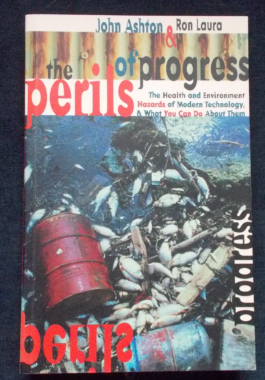
-
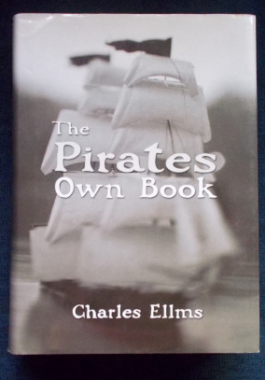 Originally published in 1837, here are the 'Authentic Narratives of the Most Celebrated Sea Robbers' - pirates! True stories of the diabolical desperadoes who plundered ships on the high seas and murdered their passengers and crews. The stories - based on contemporary newspaper accounts, trial proceedings and Admiralty records - describe in lurid detail the life, atrocities and bloody death of the infamous Black Beard as well as the cold-blooded exploits of Jean Lafitte, Robert Kidd, Edward Low, Thomas White, Anne Bonney, Mary Read and scores of other maritime marauders. For those interested in the true-life adventures of the ruthless men and women who sailed under the black flag so long ago. With illustrations reproduced from the original edition.
Originally published in 1837, here are the 'Authentic Narratives of the Most Celebrated Sea Robbers' - pirates! True stories of the diabolical desperadoes who plundered ships on the high seas and murdered their passengers and crews. The stories - based on contemporary newspaper accounts, trial proceedings and Admiralty records - describe in lurid detail the life, atrocities and bloody death of the infamous Black Beard as well as the cold-blooded exploits of Jean Lafitte, Robert Kidd, Edward Low, Thomas White, Anne Bonney, Mary Read and scores of other maritime marauders. For those interested in the true-life adventures of the ruthless men and women who sailed under the black flag so long ago. With illustrations reproduced from the original edition. -

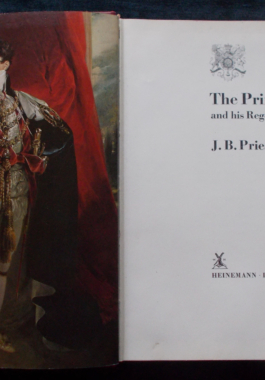
A fabulous, easy to read volume on the Prince Regent and his day. The Regency Period was one of the most romantic of British history: an age that swung between extremes of elegance and refinement and the depths of sodden brutality. The central figure is the Prince Regent, 'Prinny', and though he sometimes appears as a gigantic spoilt child, he was famously good company and a notable patron of the arts. The author portrays the personalities of the giants of the romantic age - Byron, Shelley, Sheridan, Wordsworth, Jane Austen, Beau Brummel and Sir Walter Scott; Davy Faraday and Macadam; Turner, Constable and Cotman - to name a few. It was an age of extravagance; an age marked by great eccentricities and prodigious jokes; the Luddite riots; the Battles of Waterloo and Peterloo; the first waltzes and the first locomotives. There's exotic and outrè fashions, scandals, political upheaval, architecture and the lot of the common man. Illustrated with colour and black and white drawings and photographs.
-
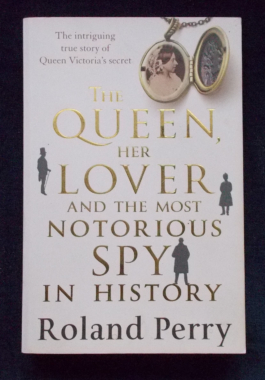 Long before her successful marriage to Prince Albert, Princess Victoria had a passionate affair with a dashing Scotsman. The 13th Lord Elphinstone was a trusted member of her uncle King William IV's household and a nobleman - but despite his impressive pedigree, Elhinstone was neither German nor royal, prerequisites for the 15 year old princess's ambitious mother, the Duchess of Kent. As the revelations of Victoria's out of wedlock affair (and the rumoured child that the union produced) would have threatened her reign, attempts were made to bury the matter forever. Elphinstone was appointed Governor of Madras and effectively banished to India. The young princess never forgot her first love; she pined for five years before giving in to her mother and marrying Prince Albert of Saxe-Coburg. Successive generations of Royals kept Victoria's secret, aware that the Queen;s correspondence with her cherished first-born 'Vicky' (the Princess Royal) revealed all and lay like a ticking time bomb in a German castle attic In 1945, Victoria's great-grandson King George IV sent Royal favourite (and MI5 operative) Anthony Blunt on seven special missions to recover the letters. But Blunt was one of history's successful double agents; before returning the letters to Buckingham Palace he microfilmed the most controversial missives and passed them on to the KGB. Perry learnt of Blunt's actions while interviewing two ex-KGB master spies in Moscow in the 1990s.His mission to uncover the story of Victoria's first love saw him spending months combing through more than 300 heavily edited files in the British Library, piecing together the truth of Victoria's secret for the first time. Here is a surprising true story of passion, long-buried secrets and international espionage. With balck and white and colour photographs.
Long before her successful marriage to Prince Albert, Princess Victoria had a passionate affair with a dashing Scotsman. The 13th Lord Elphinstone was a trusted member of her uncle King William IV's household and a nobleman - but despite his impressive pedigree, Elhinstone was neither German nor royal, prerequisites for the 15 year old princess's ambitious mother, the Duchess of Kent. As the revelations of Victoria's out of wedlock affair (and the rumoured child that the union produced) would have threatened her reign, attempts were made to bury the matter forever. Elphinstone was appointed Governor of Madras and effectively banished to India. The young princess never forgot her first love; she pined for five years before giving in to her mother and marrying Prince Albert of Saxe-Coburg. Successive generations of Royals kept Victoria's secret, aware that the Queen;s correspondence with her cherished first-born 'Vicky' (the Princess Royal) revealed all and lay like a ticking time bomb in a German castle attic In 1945, Victoria's great-grandson King George IV sent Royal favourite (and MI5 operative) Anthony Blunt on seven special missions to recover the letters. But Blunt was one of history's successful double agents; before returning the letters to Buckingham Palace he microfilmed the most controversial missives and passed them on to the KGB. Perry learnt of Blunt's actions while interviewing two ex-KGB master spies in Moscow in the 1990s.His mission to uncover the story of Victoria's first love saw him spending months combing through more than 300 heavily edited files in the British Library, piecing together the truth of Victoria's secret for the first time. Here is a surprising true story of passion, long-buried secrets and international espionage. With balck and white and colour photographs. -
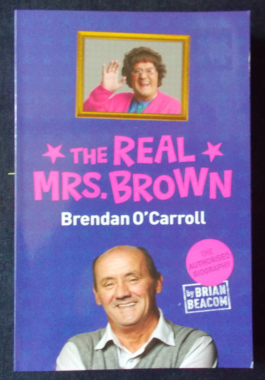 Who'd have thought a Dublin mammy with a cream cardigan and elasticated tan tights could storm British TV screens and leave a nation helpless with laughter? Brendan O'Carroll saw his TV show Mrs. Brown's Boys become a number 1 ratings success. But he had to battle hard for success. The youngest of eleven children, his mother was Maureen O'Carroll, a former nun who went on to become the first woman to be elected to the Irish parliament. Brendan adored his strong, widowed mother - and she later became the inspiration for his indomitable character Agnes Brown. The family endured poverty reminiscent of Angela's Ashes and Brendan saw no option but to leave school at 12 to work. He married young and for decades struggled to make ends meet. Eventually, bankrupt and desperate, Brendan went to see a fortune teller who told him she could see his future achieving worldwide success as a comedian and actor. At first Brendan laughed at the notion, but then he thought of how much his friends loved his gags, and decided to give it a go...A magical story of how a lovable Irishman with a wig and with a wit as caustic as battery acid surprised everyone - most of all himself - by becoming one of the best-loved comedians in the world. It is also a story of hardship, heartbreak and talent - a reminder that sometimes facts can be even more extraordinary than fiction.
Who'd have thought a Dublin mammy with a cream cardigan and elasticated tan tights could storm British TV screens and leave a nation helpless with laughter? Brendan O'Carroll saw his TV show Mrs. Brown's Boys become a number 1 ratings success. But he had to battle hard for success. The youngest of eleven children, his mother was Maureen O'Carroll, a former nun who went on to become the first woman to be elected to the Irish parliament. Brendan adored his strong, widowed mother - and she later became the inspiration for his indomitable character Agnes Brown. The family endured poverty reminiscent of Angela's Ashes and Brendan saw no option but to leave school at 12 to work. He married young and for decades struggled to make ends meet. Eventually, bankrupt and desperate, Brendan went to see a fortune teller who told him she could see his future achieving worldwide success as a comedian and actor. At first Brendan laughed at the notion, but then he thought of how much his friends loved his gags, and decided to give it a go...A magical story of how a lovable Irishman with a wig and with a wit as caustic as battery acid surprised everyone - most of all himself - by becoming one of the best-loved comedians in the world. It is also a story of hardship, heartbreak and talent - a reminder that sometimes facts can be even more extraordinary than fiction. -

The Right Stuff: Tom Wolfe
$70.00Wolfe began The Right Stuff at a time when it was unfashionable to contemplate American heroism. Nixon had left the White House in disgrace, the nation was reeling from the catastrophe of Vietnam, and in 1979 - the year the book appeared - Americans were being held hostage by Iranian militants. Yet it was exactly the anachronistic courage of his subjects that captivated Wolfe. In late 1940s Americans attempted to break the sound barrier Test pilots were people who live fast lives with dangerous machines - not all of them airborne. Chuck Yeager was certainly among the fastest and was determined to push through Mach 1 - a feat that some had predicted would cause the destruction of any aircraft. Yet soon the focus shifts to the seven initial astronauts, tracing Alan Shepard's suborbital flight and Gus Grissom possibly flooding his Liberty capsule by blowing the escape hatch too soon. There is also an admiring portrait of John Glenn's apple-pie heroism and selfless dedication. Tom Wolfe: "The Right Stuff" became a story of why men were willing - willing? - delighted! - to take on such odds in this, an era literary people had long since characterised as the age of the anti-hero." -
 The author travelled completely around the continent - a distance of 13,000 miles. He visited cities, towns and villages; sheep and cattle stations; the Woomera rocket range and indigenous settlements. The reader will meet a wide range of personalities and read informal discussions on a great many topics: immigration, population problems and potentials, Australian farming and much more, all leading to speculation on the future of this country and what role in will play on the world stage in the future.
The author travelled completely around the continent - a distance of 13,000 miles. He visited cities, towns and villages; sheep and cattle stations; the Woomera rocket range and indigenous settlements. The reader will meet a wide range of personalities and read informal discussions on a great many topics: immigration, population problems and potentials, Australian farming and much more, all leading to speculation on the future of this country and what role in will play on the world stage in the future. -
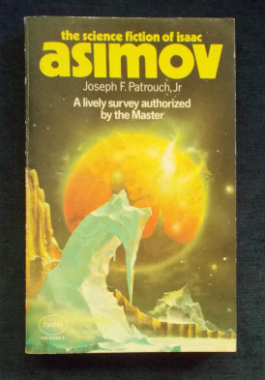 An authoritative survey and analysis of Asimov's science fiction, offering a unique insight into the themes, stories, characters and settings that have enthralled millions of fans for over thirty years. Every aspect of Asimov's works is investigated, from the very early shorts, through the Robot series, the Foundation series and the Lucky Starr novels, right up to and including the Gods Themselves.
An authoritative survey and analysis of Asimov's science fiction, offering a unique insight into the themes, stories, characters and settings that have enthralled millions of fans for over thirty years. Every aspect of Asimov's works is investigated, from the very early shorts, through the Robot series, the Foundation series and the Lucky Starr novels, right up to and including the Gods Themselves. -
 How We Reached And Climbed A Volcano At The Ends Of The Earth. On November 5, 1964 the schooner Patanela left Sydney to sail 4,000 miles to Heard Island on the fringe on Antarctica. Thre had been expeditions here before, but none had succeeded in conquering Mawson Peak, the highest point of the island's volcano, Big Ben. This was the mission of the crew. This was also the first privately sponsored expedition to leave Australia in just such a venture since 1930. Illustrated with black and white photographs.
How We Reached And Climbed A Volcano At The Ends Of The Earth. On November 5, 1964 the schooner Patanela left Sydney to sail 4,000 miles to Heard Island on the fringe on Antarctica. Thre had been expeditions here before, but none had succeeded in conquering Mawson Peak, the highest point of the island's volcano, Big Ben. This was the mission of the crew. This was also the first privately sponsored expedition to leave Australia in just such a venture since 1930. Illustrated with black and white photographs.


